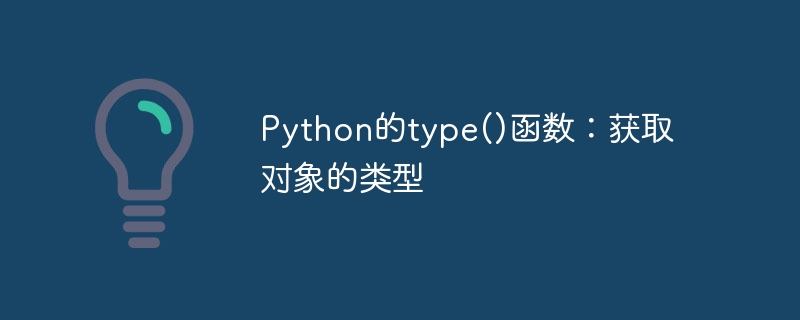

Python's type() function: to obtain the type of an object, specific code examples are required
In Python, we often need to know the type of an object in order to use it in the program Perform corresponding processing. Python provides the type() function to obtain the type of an object. This article will introduce how to use the type() function and give specific code examples.
First, let’s take a look at the basic usage of the type() function. The type() function can accept one parameter, which can be any object. For example, we can use the type() function to obtain the type of an integer:
x = 10 print(type(x))
The output of the above code is
s = 'Hello World' print(type(s)) lst = [1, 2, 3] print(type(lst)) tpl = (1, 2, 3) print(type(tpl))
The above code outputs
In addition to basic data types, we can also use the type() function to obtain the type of custom objects. In the following code example, we define a class named Person, and then use the type() function to obtain the type of the class:
class Person:
def __init__(self, name):
self.name = name
p = Person('Tom')
print(type(p))The output of the above code is In actual development, we often need to dynamically obtain the type of variables for corresponding processing. The type() function can be used with if statements to determine the type of variables. The following is a sample code that performs corresponding operations according to different types: The above code will print different output results according to the type of the variable. For the integer variable x, the output result is "This is an integer."; for the string variable s, the output result is "This is a string."; for the list variable lst, the output result is "This is a list."; for For variables of other types, the output result is "Unknown type.". In this article, we introduce how to use the type() function in Python and give specific code examples. By using the type() function, we can easily obtain the type of the object and perform corresponding processing based on the type. I hope this article can help readers better understand the function and usage of the type() function. The above is the detailed content of Python's type() function: Get the type of object. For more information, please follow other related articles on the PHP Chinese website!def process_variable(var):
if type(var) == int:
print('This is an integer.')
elif type(var) == str:
print('This is a string.')
elif type(var) == list:
print('This is a list.')
else:
print('Unknown type.')
x = 10
s = 'Hello'
lst = [1, 2, 3]
process_variable(x)
process_variable(s)
process_variable(lst)




